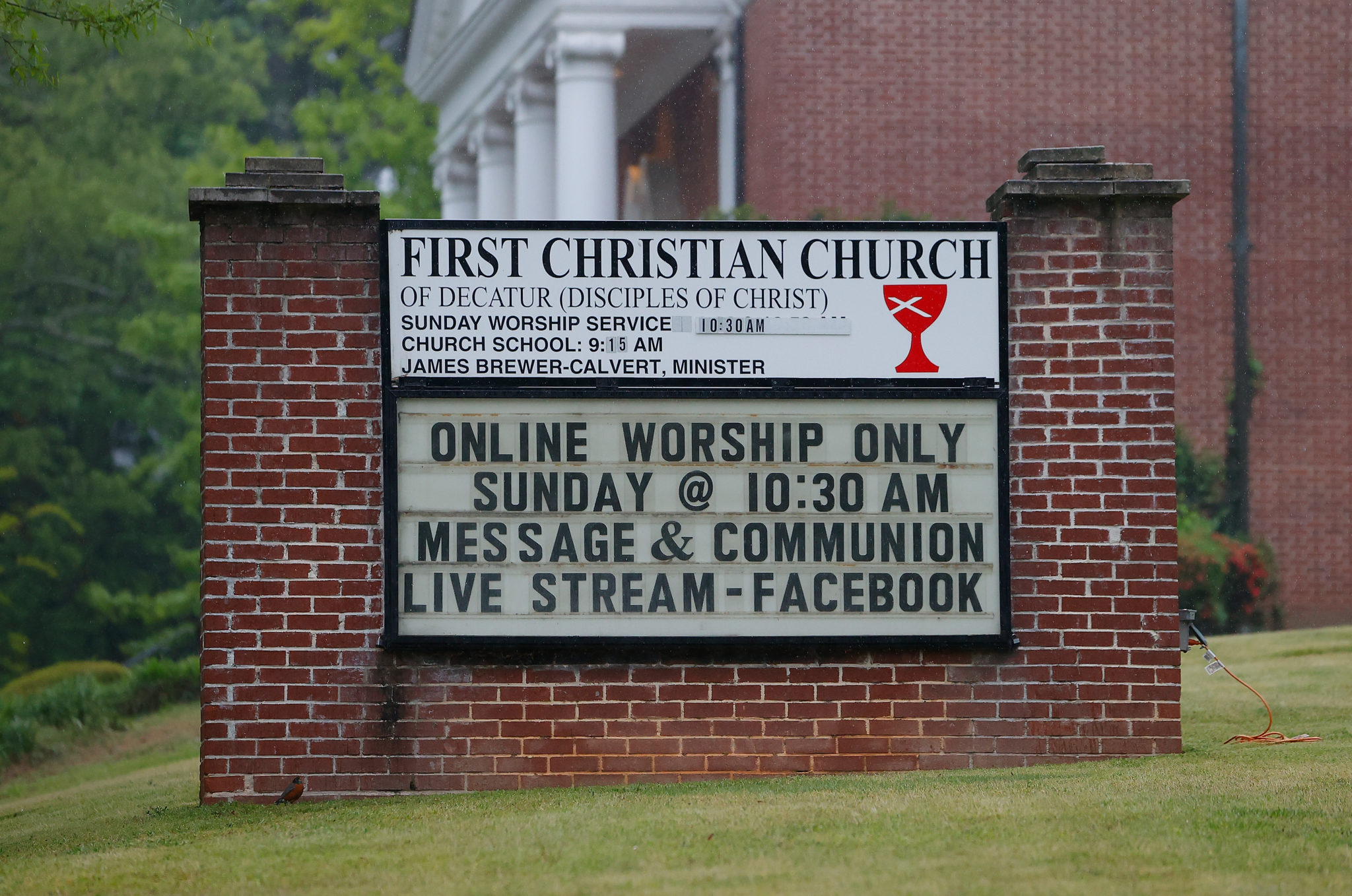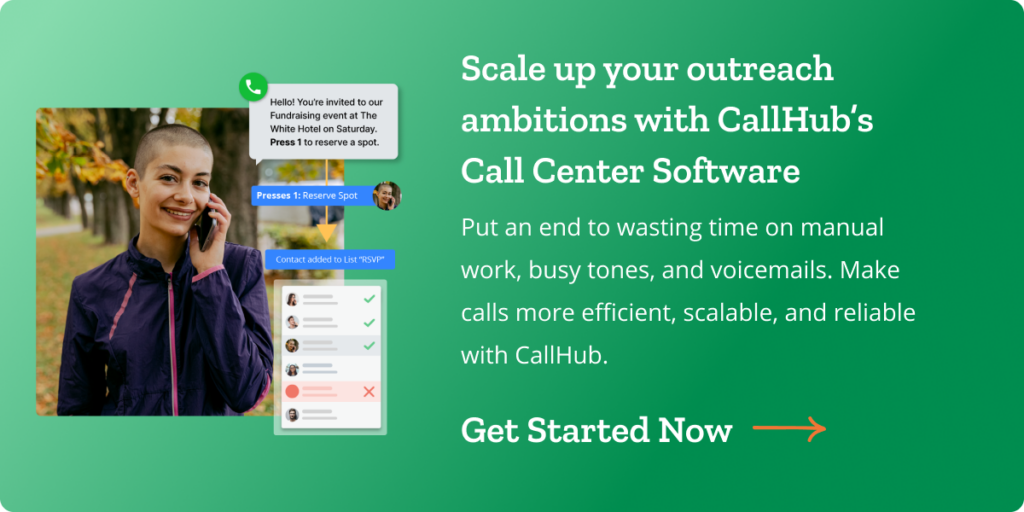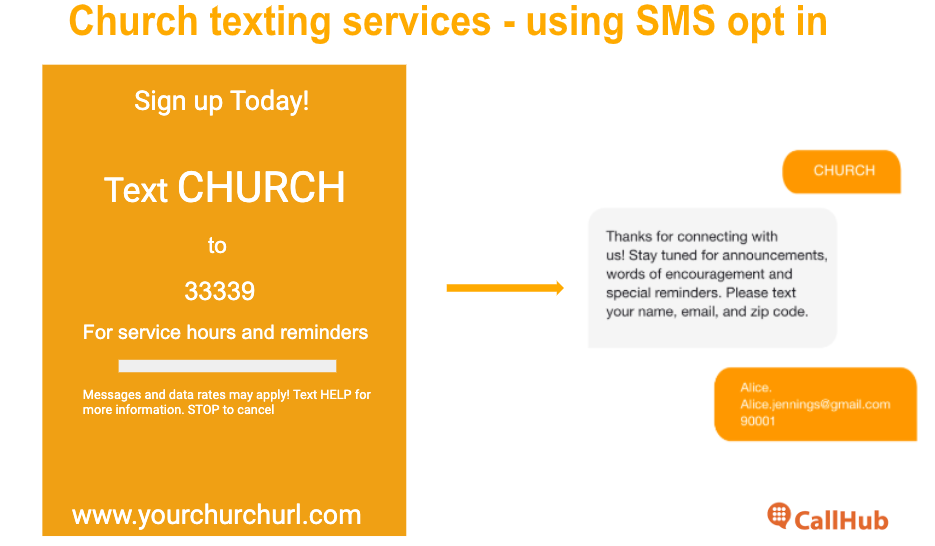Table of Contents
Before church communication software, churches transmitted information to their congregation via message boards and newsletters. The problem with these traditional methods of communication is that they don’t enable conversations to form meaningful connections with your church members. So, they automatically get lesser engagement, making the congregation, in turn, less involved with the church.
Since 29% of young people (23-30) stopped attending churches because they did not feel connected to their congregation, this is a serious problem to address.

Source: Getty Images, Texas & AM today
That is where church communication software can help. It ensures that your message:
- Cuts through the noise – by sending more engaging content (e.g MMS)
- Is opened/read (especially text messaging) – by sending it via platforms that your members prefer
- Encourages the congregation to respond – by keeping messages personal
In this article, we will look at a few critical channels of communication (emails, texts, etc) and see how church communication software can help streamline communication.
What is church communication software?
A church communication software helps you to effectively communicate within your congregation across multiple channels (like phone calls and texts). It can be used to
- Improve fundraising with timely follow-ups
- Boost volunteerism by simplifying recruitment and volunteer management
- Increase event attendance with reminders
- Keep your congregation engaged with updates and notifications on what is happening with the church.
Tools like CallHub and Flocknote are excellent examples of church communication software that can communicate across multiple channels.
Often, church communication software is confused with church management systems. The two aren’t necessarily the same. While church communication software focuses solely on communicating the message, management software does much more. It tracks attendance, manages data, and can also help in accounting (in addition to communication).
In essence, church communication software can be considered a subset of a church management system that allows messaging across multiple channels.
Examples of church communication software – across channels
As a rule of thumb, the best channels to reach your audience would be via those that they frequent. That could mean popular channels like email, text messages, social media, and phone calls for your church members.
Please note that everyone in your congregation will not be equally accessible across all these channels. GenZs and millennials would prefer texts rather than phone calls. The older generation, however, may prefer emails. It is good to have complete background checks on your audience before you pick an outreach channel.
| S.no. | Channel | Audience | Characteristics | How can it be used? |
| 1. | Emails | Millennials and the older generation | Less intrusive. Excellent for long-form messages and descriptive content | *Event invites *Newsletters *Church updates |
| 2. | Phone call | Millennials and older | Very personal. Enables meaningful conversations and builds relationships | *Follow up with donors *Recruit volunteers *Personal event invitations |
| 3. | Texts | GenZs, millennials, and possibly older generation | Personal, yet non-intrusive. Preferred channel by the younger population because it is less disruptive | *Urgent messages *Recruit new members with text to join *Reminders and updates |
| 4. | Social media | GenZs, millennials and possibly older | GenZs, millennials, and possibly older | *Awareness about your church and activities *Reaching a new audience *Promoting your shortcode |
Here is how you can engage your congregation across these channels. You can customize your communication according to which channels your members prefer.
1. Email
As a communication channel, emails are the least intrusive and so better received.
Also, since the average person checks their email about 15 times daily, your message has a high chance of being read.
How can you use it?
- To send event invites
- Send updates about the church to the entire congregation
- Long-form messages describing your latest charity activities
Example – Flocknote. Provides unlimited emails. The email tool has a drag-and-drop composer that is easy to use.
Word of caution
Around 306 billion emails are sent every day. Using personalization and proper messaging is paramount to stand out in the inbox.
Pro tip
Segment your audience, and tailor your messages for each segment. This will make the emails more relevant for your audience. For example, new congregation members can get a series of ‘welcome emails’ that talk more about the church and how they can participate. Older members need not be a part of this segment but can get updates about recent happenings at the church.
You May Also Like: Church communication cards – A quick guide for growing churches
2. Phone call
Phone calls are the most personal channel of communication with any member. You have the invaluable opportunity to make a direct connection and have a meaningful conversation with the member – which increases the impact of the message.
How can you use it?
- To call donors
- Recruit volunteers
- Personal invite to events
- Follow up with members about church attendance (and check in on them)
Example – CallHub’s call center software can quickly scale. It allows you to rent a local number familiar to your members. This means that your calls have a higher pick-up rate.

Word of caution
75% of millennials prefer texting over calls as they are less intrusive. So remember that making a phone call can harm your church members more than good if they view your calls as a ‘nuisance.’
Pro tip
Phone calls need not be your primary channel of communication. It can simply be the extra effort to add a personal touch. E.g., check in on members who haven’t attended recently or follow up with major donors during fundraising efforts. You can also supplement the calls with texting. E.g., if a donor doesn’t answer the call, send a text from the call center to leave them a message.
3. Text messages
Of the channels that we have seen thus far, text messages are unique. They are the most personal while being the least intrusive. Also, text messaging are more likely to be opened and read – making it the best way to reach your congregation.
How can you use it?
- Collect donations by sending online donation link via text
- Sign up new members with text to join
- Send bulk text messages for engagement/updates,
- Send reminders about events or activities
- Send the call for prayer to church members (either to all or to specific groups)
- Urgent/last-minute communication to the congregation
Example – CallHub. The texting feature allows for peer to peer texting as well. It means you can personally converse with church members at scale. It is more personal than a bulk text, yet less time-consuming than a phone call.
Word of caution
Ensure that you have explicit opt-in from the members before text messaging them. You can get opt-ins via communication cards, registration via an online website, or simply asking them to sign up using a shortcode. Make you have a clued-in planning center that in monitoring opt-ins.
Pro tip
Bulk MMS and peer-to-peer texts are more engaging. You can also move pastoral chats online via peer to peer texting when your congregation cannot attend church. However, An easy use would be SMS opt-in to collect more information about your members. Here is an example:

4. Social media
A channel that is naturally programmed to engage and build audiences – especially for Gen Z and millennials. Being active on social media helps add social proof and reach a new target audience for your church.
Remember to use those social channels that your audience frequents. For instance, if most of your audience is on Facebook and Instagram (and not necessarily Twitter), focusing on the first two may make sense.
How can you use it?
- Create hype around your events.
- Talk about your church activities and community efforts
- Recruit volunteers & new members by promoting shortcode
- Building awareness about your faith and your community
Example – A software like Flocknote can help streamline the process. However, they are not strictly necessary. Popular social media management tools like Buffer can help you with scheduling.
Word of caution
25% of members stop attending churches because they disagree with the preached political views. The same can hold for social media. As a channel, it is obvious and attracts a large audience with varied political views. So keep your messaging circumspect to avoid alienating potential members.
Pro tip
Form a community/group on social media (e.g., Facebook group) specifically for your church members. You can also be active on other Facebook groups to engage with like-minded members of the faith.
Does your church need church communication software?
Short answer – Yes.
Opting for church communication software is not just for churches struggling with attendance and fundraising. It is the best way to grow your congregation and build a friendly community. So, it is an excellent addition even for a small church, mainly because it can be effective.
It would make your communication process more efficient and easier to communicate.
To get the most out of your communication software, ensure that:
- The contact details of your congregation are digitized
- The data is as accurate as possible
- You have a communication plan (for fundraisers, etc.)
- Your planning center maintains updated calling lists.
First, you can get basic features (like texting) and see how it works. Based on how your congregation reacts, you can always see what add-ons to get and migrate to a higher plan.
What should you look for in church communication software?
Deciding on a church communication software can seem daunting, given the many options available. Here are some points to keep in mind before making the decision.
1. The church communication software should support the messaging channels your church needs
What is the biggest problem that your church is facing? Is it struggling to raise funds? Increase membership? Or, quite simply, is it focused on boosting attendance to sermons?
Depending on the objective, your communication strategy will change, and your church communication software should be able to support it.
For instance, you would like to be more active on social media to build awareness and increase membership. Similarly, most of your communication can be reminders and texts if you want to boost attendance.
Ensure the software can handle communication across those channels before you pick it.
2. The software should sync with your CRM
Your church communication software cannot work in isolation. It should enable you to import member’s contact details from the database or allow you to make notes while having a conversation. So, it should sync well with your current CRM to ensure seamless data transfer.
3. Easy onboarding and usage
Even if communication is crucial to keeping your congregation together, fitting it between your other pastoral duties would still be challenging. So even if you have to get it right, it doesn’t mean you can spend an inordinate amount of time on it.
That is where the right communication software can make a difference. A tool that requires fewer steps to get started and is easy to get used to would mean less time spent sending the messages.
Choose a tool that is simple to learn, easy to use, and can help you get started instantly. For instance, with a tool like CallHub, you can import your contact list of church members and send out bulk SMS to your congregation in under 10 minutes.
4. Scalability
It is not about how expensive or affordable the tool is – it is just that the tool should be able to accommodate your church’s needs as your congregation grows.
For instance, to start with, you will merely need an SMS broadcast tool to send regular prayer meeting updates.
Later, you would like to scale the operation. You may want to send:
- bulk SMS for different segments of your congregation
- peer-to-peer conversations with donors via texts
- follow-up texts to thank volunteers
Your communication tool should have advanced features that enable you to do the same. CallHub has a pay as you go pricing model that ensures you only pay for what you use and allows you to migrate to a higher plan when needed.
Takeaway
Using church communication software does not mean that you will move away from message boards. Instead, you can integrate your various communication channels, allowing consistent messaging across all platforms.
For instance, your message boards can now show your keyword and shortcode, encouraging members to sign up for an event. Your welcome kiosks and communication cards can promote shortcodes and encourage new visitors to sign up for the church’s communication.
Regardless of which communication channels you choose, it is undeniable that communication software would make it simpler for you. If you have any questions regarding church communication, please talk to our experts to learn more.
Feature image credits: Shelagh Murphy

